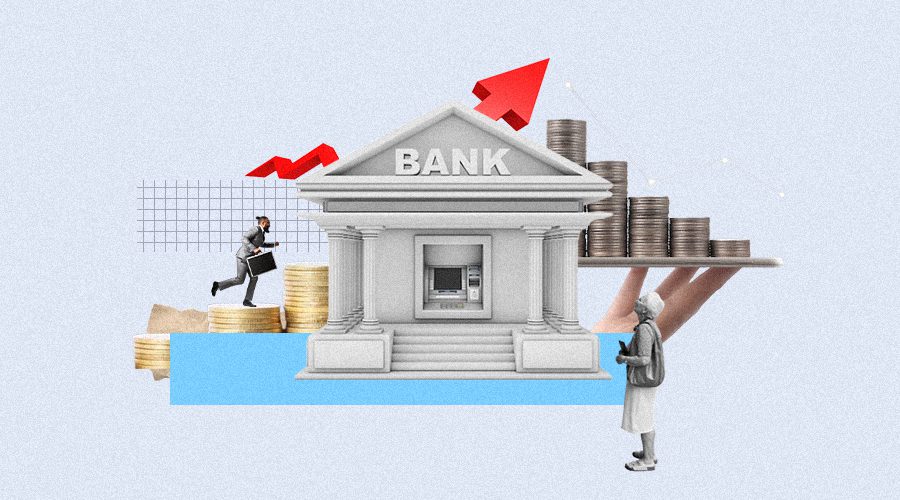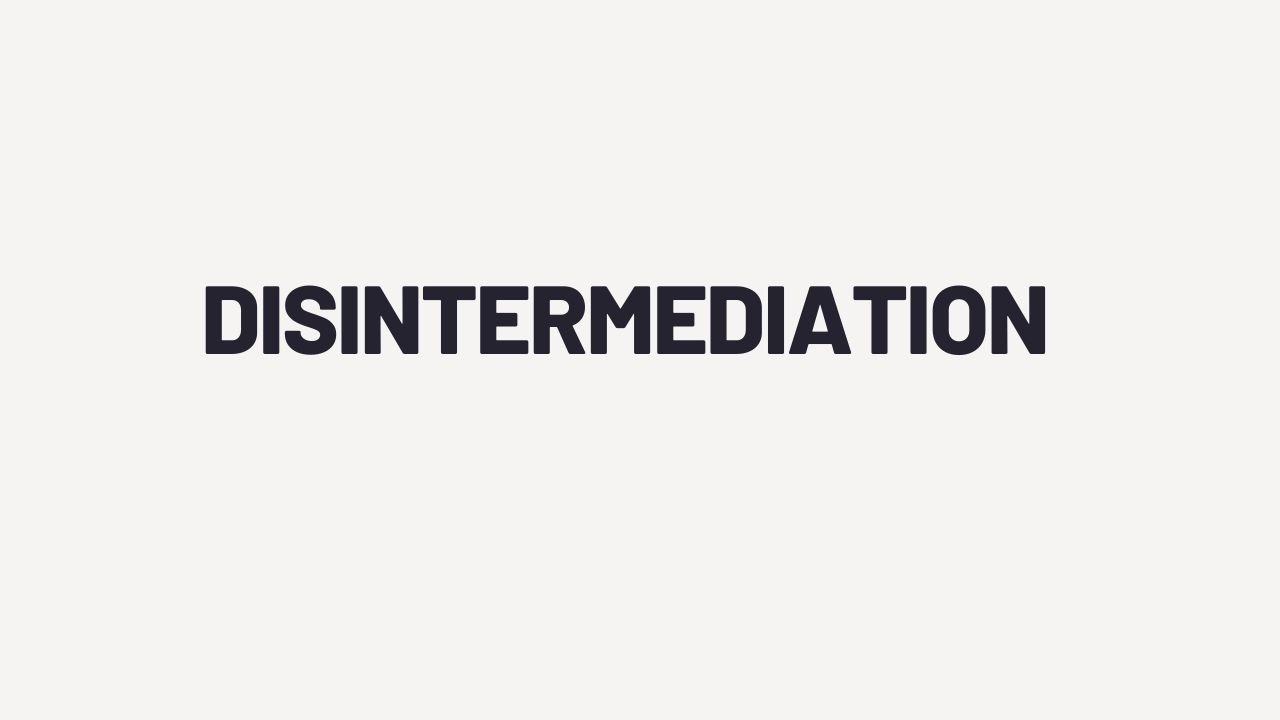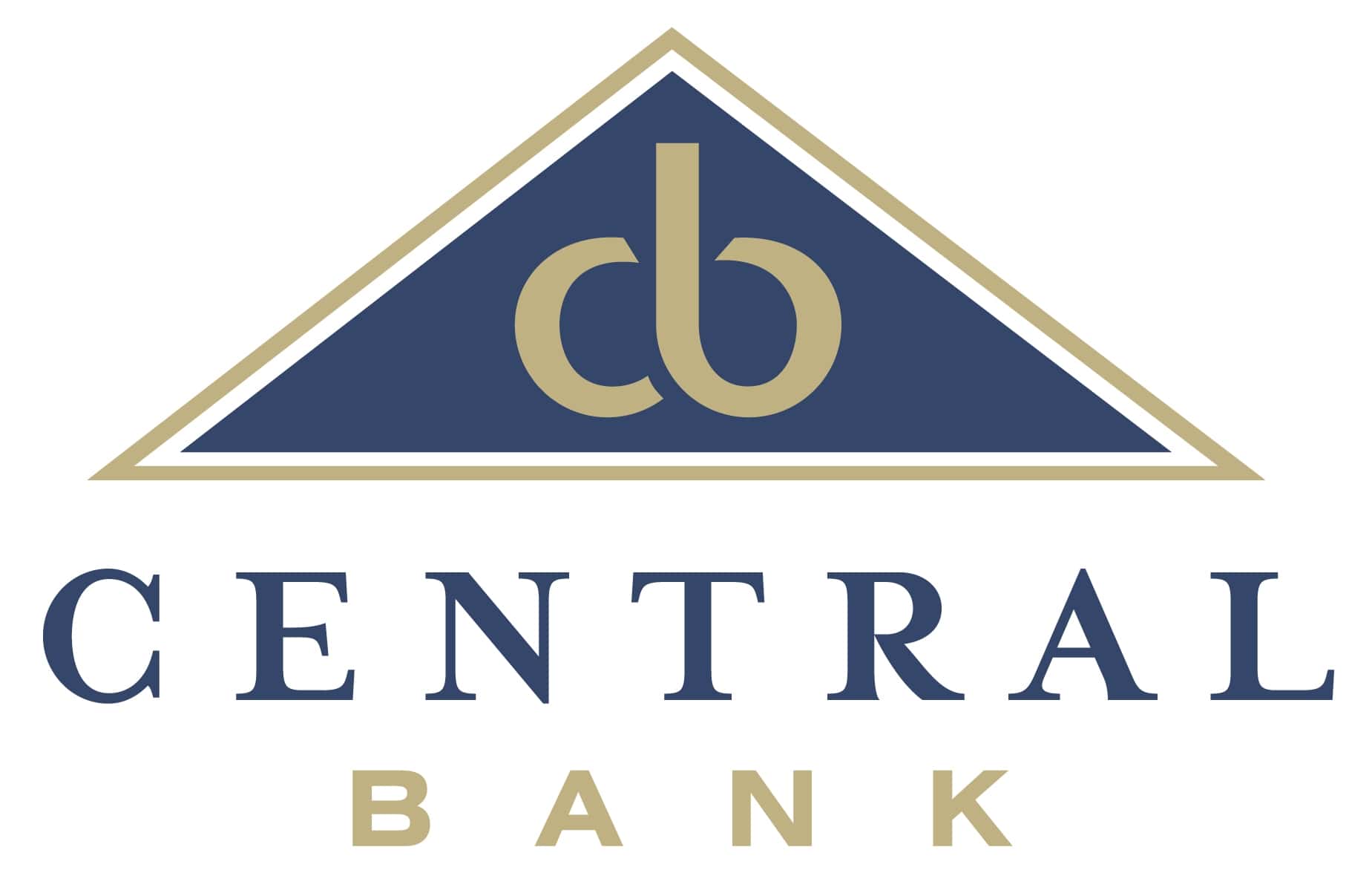Banks once stood unchallenged, holding the keys to our financial needs. Now, they face a shake-up that could redefine their role in our wallets and lives. The impact of financial disintermediation on banks is massive, stripping traditional banking of its middleman status and giving rise to tech-savvy alternatives. We’re heading towards a frontier where peer-to-peer lending isn’t just an option; it’s becoming the norm. The rise of online investment platforms signals a tide change. And as these new gatekeepers unlock opportunities, banks are scrambling to adapt. Let’s dive into this transformation and see how deep the ripples go.
Unpacking Financial Disintermediation: Transforming the Banking Ecosystem
The Evolution from Traditional Banking to Peer-to-Peer Lending
Banks once ruled the loan world. Now, websites connect people who need money with those who have it. We call this peer-to-peer lending. It’s like giving a friend cash, but online, and to strangers.
What does this do to banks? A lot. It means people skip banks for loans. With less loan action, banks feel the pinch. This change hits their wallets. Fewer loans can mean fewer dollars for banks. They need new ways to earn.
Let’s dive deeper into peer-to-peer lending. It shakes up how banks used to work. Instead of a bank checking if you’re good for a loan, the website does it. They use tech to judge fast and keep costs low. That’s a punch to old-school banks.
Banks aren’t blind to this. They see tech’s role in their world changing. They’re jumping on the tech train too, finding ways to make getting loans online just as easy. Yet, the challenge stays the same: keep up or get left behind.
Online Investment Platforms: The New Gatekeepers
Think about the stock market. It used to be a suits and phone calls kind of deal. Not anymore. Now we’ve got online platforms opening the doors wide to anyone.
These platforms are game-changers. They let you invest your cash without a traditional bank. You can buy stocks, bonds, and more with just a few clicks. This tech move leaves banks scrambling. They need to find new ways to stay useful.
For banks, the stakes are high. With each click on an investment app, banks lose a chance to handle that money. This means they might earn less. They’ve got to adapt by offering something these platforms can’t.
Bottom line, friends, is this: banks are getting a wake-up call. Money moves directly between folks today, with no bank stop. This shift has banks hunting for ways to stay in the game. They’re finding new paths and changing. The banking game is not over; it’s just evolving fast.
The Ripple Effect: Consequences of Disintermediation on Banks
Challenges and Adaptation Strategies for Traditional Banks
Banks face big tests today. The rise of peer-to-peer lending and online investment platforms cut banks out. People now lend and borrow directly. This shift hits banks hard. How do banks deal with this? They adapt. Some build their tech tools. Others team up with fintech firms.
Financial disintermediation trends show more users trust tech for their money needs. Banks must now improve. They must offer services that tech gives users. Easy use and quick access are key. Banks are also creating new products. They want to get users back.
Challenges for traditional banks are not just about losing customers. They also face lower cash flow. They have to rethink how they earn. They must also ensure they don’t take on too much risk.
The Shift in Bank Revenue Streams and Profitability
Banks used to make money in clear ways. They took deposits and gave out loans. Now, things are changing. The role of technology in bank disintermediation means compete or lose out. Fintech startups are offering services without the bank middleman. This means banks earn less from interest rates.
But banks are responding smart. They invest in tech and change how they work. They focus more on fees and advice services. Some even run their peer-to-peer platforms.
The shadow banking system also shakes up the game. These are firms not like banks but act like them. They don’t face the same rules as banks, which is tough for banks. Direct lending’s threat to banking is real. Banks must stay alert to keep up.
Bank revenue streams are shifting from traditional interest earnings. Banks now look for other ways to earn. They charge for managing assets and giving expert advice. They also join with tech firms to create new tools. They want to give users value beyond just loans.
Banks’ response to disintermediation is key. They must manage risk while offering what users want. The future of banking with disintermediation is at a big turning point.
As for the workers, the impact on banking employment is strong. Jobs are changing. There’s a bigger need for tech skills in the banking world.
Banks are entering a fresh era. They work on fintech innovation and banking together. Crowdfunding effects on banking push for more change. The path ahead is about using tech to give users what they want. Banks must also keep the trust they have built over many years.
The banking world is not standing still. It is turning every day. Banks that understand this keep strong, even as tech keeps moving. They keep their place in this fast money world by changing. They know that to stay in the game, they must play it different. And that’s the fun part.
Banks must be smart, quick, and ready. They must use tech to stay big in the money world. The race is on and the track is full of fintech players. Banks that run smart will not just stay in the race. They could win it.
Fintech Innovation: A Disruptor in Traditional Bank Intermediation
Banking Sector’s Response to Fintech Growth
We live in a time where tech makes life easier, even in money matters. Banks once ruled this area. But now, banks face new tech kids on the block – fintech firms. These firms are changing how we borrow, save, and invest money.
Banks are no longer the only choice for these services. With fintech, you can get a loan without stepping into a bank. Peer-to-peer lending platforms and online investment services offer these easily. And they often give better rates.
“How has fintech growth impacted banks?” The answer is simple. Fintech forced banks to change. Many now offer their own tech-smart services. They had to adapt or risk losing customers. This adaptation creates a new landscape where banks improve services and cut fees.
Banks use smartphones and the internet to reach customers. Many are partnering with fintech firms. Some even create their own tech startups. Changes are happening in how banks work. They’re becoming more like tech companies.
But there’s more. Banks are looking at how they manage risk. With fintech firms offering loans, banks need to be careful. They don’t want to lose money on bad loans or fall behind the curve.
In short, fintech growth is pushing banks to change fast. To stay in the game, banks must be more user-friendly and tech-savvy.
Blockchain’s Role in Revolutionizing Financial Intermediation
Now let’s talk about a game-changer: blockchain. You’ve probably heard of it with Bitcoin. But it’s not just for crypto-currency. Blockchain is a tech that keeps records safe and sound. And it’s shaking up the old way of doing bank stuff.
What does blockchain do for banking? It makes moving money and signing deals quick and secure. No need for a middle man, like a bank. It can save time and money for everyone involved.
For example, when someone sends money abroad, it can take days. With blockchain, it can take just minutes. And with less cost too! It’s easy to see why banks are paying attention.
Blockchain could mean banks lose some business. They used to be needed for safe money transfers. Not so much now. Instead, banks are starting to use blockchain. They’re finding ways to use it to their advantage.
So yes, banks are changing, big time. With things like peer-to-peer and blockchain, they have to. To keep their spot, banks are getting creative. They’re finding new ways to help you with your money. It’s all about staying ahead and offering what customers want.
In short, blockchain offers a faster, cheaper way to do bank work. Banks are jumping on this to stay relevant. They’re working on new uses for blockchain to help you more.
Banks are not sitting still. They’re moving with the times to offer you top-notch services. All thanks to fintech pushing them forward.
Navigating the Future: Banks and the Shadow Banking System
The Expansion of Non-Banking Financial Services
Money used to mean banks. No more. Now we have a whole new world of options. They’re fast. They’re online. And they’re shaking banks at their core. Welcome to the shadow banking system. Here, transactions happen without traditional banks. Think of peer-to-peer lending or crowdfunding. They allow people to get loans or invest directly with each other. By bypassing banks, they change how we think about money.
The impact of disintermediation? Big. Very big. Banks are feeling it. They’re not the only game in town anymore. This loss of control is a punch to their bottom line. But it’s not just about profits. It’s about survival. For banks to stay alive, they must adapt. And fast!
Regulatory Responses and Risk Management Amidst Disintermediation
Banks must play it safe. They must manage risks like pros. And when the rules change, they must dance to a new tune. We’re talking about disintermediation here. The need of the hour is for regulators to catch up. They have to make sure the new finance world is safe for everyone.
The rules now must cover more ground. Shadow banks need watching too. We can’t let them grow wild. Risks need checks. Banks must learn new steps. They must keep an eye on where the money flows. If it’s not in their vaults, where is it? They can’t afford blind spots. Banks have a new job now. They have to track their cash.
Regulators must be sharp. The market is full of new players. Technology makes it easy to bypass banks. But with ease comes risk. We need rules to keep things safe. Banks, listen up. Adapt or get left behind. The future is now. And it’s full of change.
In this game, it’s the quick and the smart that win. Let’s wait and see who makes it to the finish line.
In this post, we dove into how banking is changing fast. We started by looking at how old-school banks are moving to peer-to-peer lending. Then, we saw how online platforms are becoming new leaders in the money game.
We talked about how banks are fighting to stay ahead. They have to try new things and change where they make money. When fintechs showed up, they shook everything up even more. Banks had to step up their game because of that.
Blockchain came in and changed the rules. Now, everyone has to play different. Lastly, we checked out what banks are doing to keep up with other money businesses that are not banks. There are new rules and ways to keep everything safe, too.
As we move forward, banks will keep changing. They will find new ways to be a part of our money lives. It’s a wild ride, but staying in the know is key. And that’s what we’re here for!
Q&A :
What is financial disintermediation and how does it affect banks?
Financial disintermediation is the process where consumers or businesses bypass traditional banks and financial institutions to obtain financial services from alternative sources. This can affect banks by reducing their market share, as customers opt for non-bank entities that might offer higher returns, lower costs, or more convenience for services like loans, investments, and payments.
How has the trend of financial disintermediation evolved in recent years?
In recent years, the trend of financial disintermediation has accelerated, driven by technological advancements and the rise of fintech companies. With easy access to digital platforms and tools, people are increasingly using peer-to-peer lending networks, crowd-funding platforms, and digital wallets, which impacts banks by challenging their traditional business models.
Can financial disintermediation be beneficial for consumers and businesses?
Yes, financial disintermediation can be beneficial for consumers and businesses by providing them with more options, often at a lower cost, and with higher efficiency. It can also promote innovation and competition in the financial market. However, it’s important for consumers to be aware of the risks associated with non-regulated entities.
What are the risks associated with financial disintermediation for the economy?
Financial disintermediation may pose risks to the economy, including a lack of regulation and oversight for new financial services, which can lead to increased financial instability. Additionally, it can reduce the effectiveness of monetary policy, as central banks’ influence over the credit supply diminishes with fewer transactions occurring through traditional banking channels.
How are banks responding to the challenges posed by financial disintermediation?
Banks are responding to the challenges posed by financial disintermediation by innovating their product offerings, investing in technology, and forming partnerships with fintech companies. Many traditional financial institutions are also expanding their online presence and improving their digital services to retain customers and remain competitive in the evolving financial landscape.






